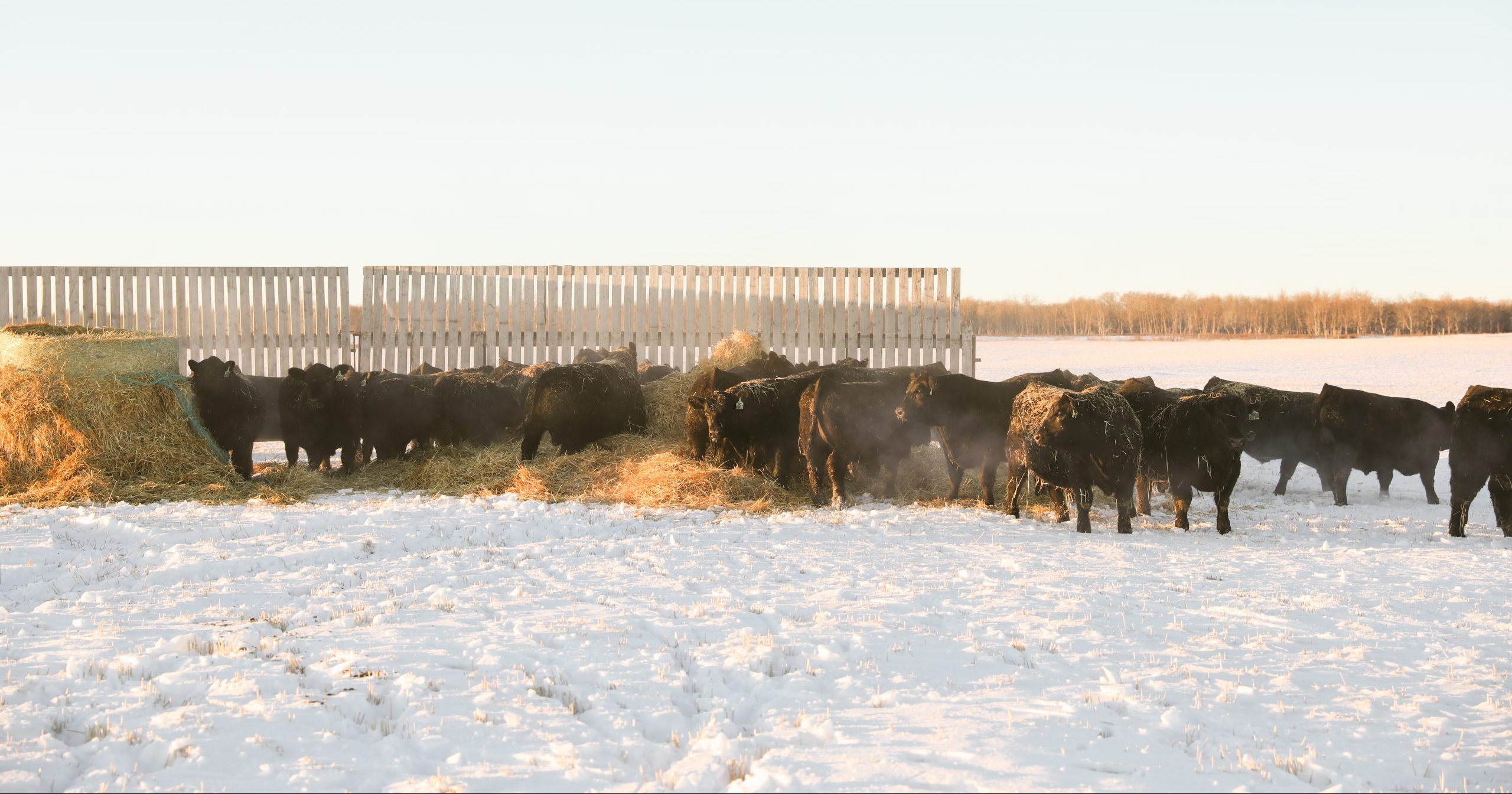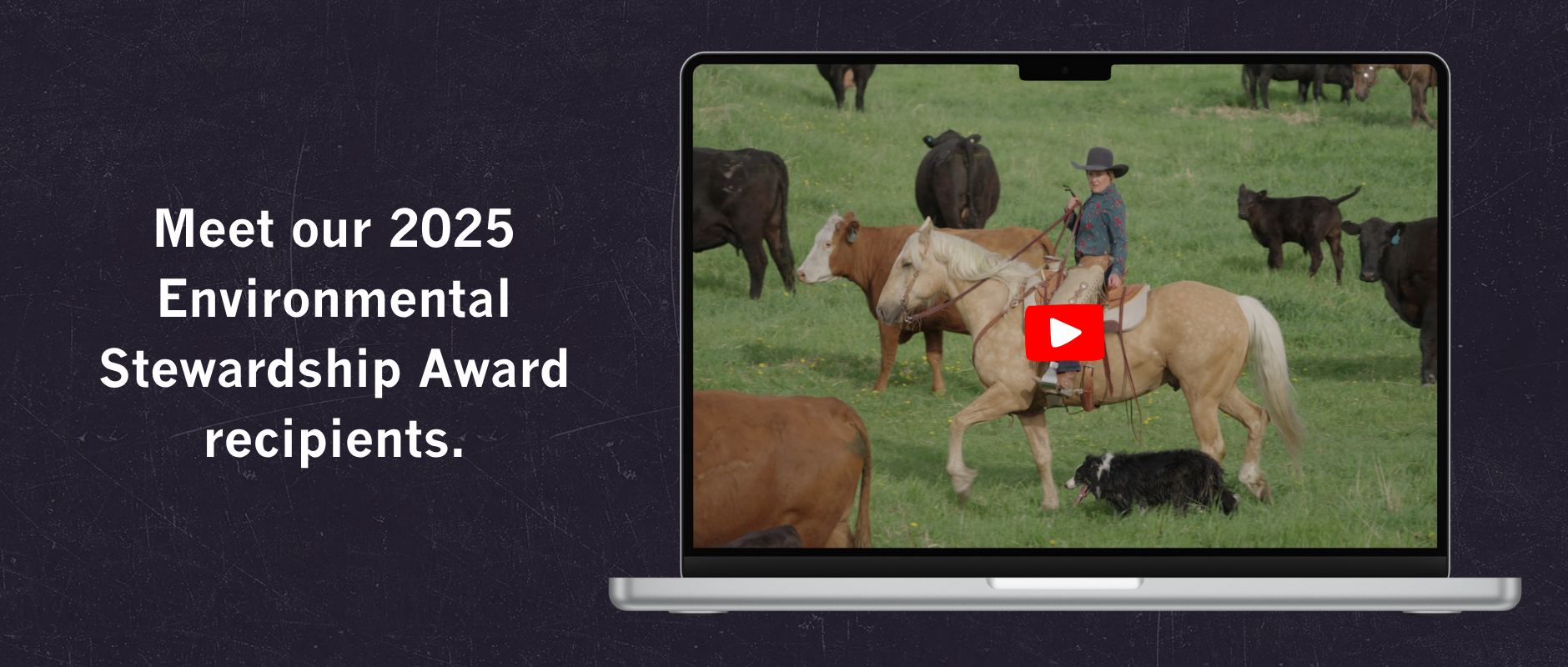AB Direct - Steers
Rail: 475.00-485.00 del
AB Direct - Heifers
Rail: 475.00-485.00 del
US Trade- Steers
Rail: 330.00 (IA, NE)
US Trade - Heifers
Rail: 330.00 (IA, NE)
Canadian Dollar
0.27

From the Government Desk
This fall has brought a whirlwind of legislative activity impacting agriculture, with several significant bills and reviews at both the provincial and federal levels.
Provincial Legislation
In Alberta, amendments to the Meat Inspection Act were introduced on October 30 by Agriculture and Irrigation Minister RJ Sigurdson. These changes aim to address illegal meat sales by significantly increasing maximum fines from $10,000 to $100,000 per offence. With violations on the rise, these amendments have received ABP’s support due to the critical role food safety plays in protecting human health and consumer confidence.
The Recreational Access Regulation, under Forestry and Parks, is a contentious one because it attempts to balance the needs of the leaseholder (and public land disposition holders) with the hunting industry. I’m saying “hunting” here because the vast majority of the debate around the regulation relates to hunters. Before the Recreational Access Regulation, leaseholders had common law rights akin to freehold land. In 2003, the government of the day decided if the land was not actively being grazed, or the recreational activity did not impact the long-term health of the grazing resource, then the public had a “reasonable” right to access. The regulation, therefore, allows access in those situations after contacting the leaseholder first.
Twenty-two years later, leaseholders are defending their right to use and protect the resource. Leaseholders have done a great job of stewarding the ~5 million acres of grazing lease. Thanks to their stewardship, of the 100 million acres of public land in the province, grazing lease land is the most desirable land to hunt. Demand for hunting access has grown substantially since the onset of the Regulation, with some leases near urban centres receiving hundreds of requests. This is certainly not reasonable for the leaseholder, and likely not a great experience for the hunters. As leaseholders have tried to throttle this increasing flow of demand to maintain the ecosystem, their operation, and manage their time, they have been met with growing frustration from hunters.
Leaseholders’ efforts have resulted in grazing leases being some of the most ecologically valuable lands in the province, benefiting both agricultural production and conservation. However, as the government has expanded wildlife populations and increased the issuance of hunting tags, the lack of adequate access management has placed leaseholders in a challenging position. Too often, they are unfairly portrayed as obstacles rather than being recognized for their vital role as stewards of these landscapes.
Federal Legislation
At the federal level, two bills have been key priorities for the beef industry. Bill C-282, which restricts trade negotiators from discussing supply-managed commodities, threatens Canada’s ability to maintain flexible trade agreements. The bill jeopardizes the 90 per cent of agricultural producers who rely on free trade. To address these concerns, ABP has joined forces with Alberta Pork, Alberta Cattle Feeders and Team Alberta Crops to urge the province to advocate for policies that protect the broader agricultural sector. With a new administration in the U.S. that ran on a platform of tariffs, we do not want to put a target on the back of Canadian agriculture.
Bill C-293, which focuses on pandemic preparedness, has also raised concerns. While the overall objective of preventing disease outbreaks is sound, certain provisions could disrupt supply chains in animal agriculture. Notably, the bill explicitly promotes alternative proteins, which ABP believes is misguided in the context of pandemic preparedness. Thankfully, Alberta’s government has backed our efforts to amend the legislation. ABP has worked closely with Minister Sigurdson and Minister of Health, Adriana LaGrange, to raise these issues with senators, advocating for changes that protect the beef industry.
Risk Management
Business risk management programs have been another critical area of focus, particularly AgriStability. This spring, a pilot project was launched to explore program adjustments for grazers, including cattle, bison and sheep, which rely heavily on pasture-based systems. The pilot confirmed longstanding concerns, such as issues with non-market feed adjustments and ineligible feed. This new evidence strengthens the case for reforms under the Sustainable Canadian Agricultural Partnership. There was strong support for the concept of reforming AgriStability to provide much-needed Business Risk Management (BRM) support to the cow-calf sector. Further, with the high stakes of farming right now, the cap on AgriStability could be a major limitation for feeders and some cow-calf operations in a disaster scenario.
While programs like Livestock Price Insurance (LPI), AgriStability, and Moisture Deficiency Insurance (MDI) are important, their payouts fall far short compared to crop insurance. For example, in 2021, crop and hail insurance paid out $2.6 billion, whereas programs supporting livestock sectors collectively paid out around $500 million. At the time of writing, the 2023 numbers were not publicly reported, but I expect the payout to beef to be similar, as AgriRecovery was less, but the MDI improvements paid out more. Achieving parity between these programs is essential to ensure the long-term viability of cow-calf operations and feedlots.
Planning
The South Saskatchewan Regional Plan and Nature Strategy consultations are underway with Environment and Protected Areas, and ABP is actively participating to advocate for beef producers. ABP is pushing for the inclusion of payments for ecological goods and services and for recognition of the conservation work that producers carry out daily.
There is growing concern that governments may seek to regulate grazing lands, leveraging the exceptional stewardship provided by beef producers. These lands’ health and productivity are a direct result of producers’ dedication, but regulation could jeopardize their rights and livelihoods. ABP strongly advocates that any regulatory measures must be voluntary or producers must be fairly compensated for the value that is taken from them. Striking a balance between protecting producers’ rights and ensuring sustainable land use is essential, and implementing ecological goods and services payments offers a practical solution to achieve this equilibrium.
Going forward
Predicting the future in government relations is always challenging, as things can shift rapidly. However, there are several key issues currently gaining momentum that ABP will focus on addressing. They are:
1. Drought Management
Drought continues to pose a serious threat, with parts of Alberta entering winter with record-low water tables. If these conditions persist and dugouts are not replenished, producers will face significant challenges in the coming year. Thought and programming will be needed to help producers navigate potential water shortages.
2. Grazing Leases and Public Perception
The tension surrounding grazing leases and the Recreational Access Regulation is increasing. Public perception often overlooks the critical role these leases play in agricultural production, land management, and conservation. ABP will work to ensure the value of these leases is recognized and that leaseholders are supported in managing pulic access effectively.
3. Improving Risk Management Programs
Risk management programs must evolve to remain relevant for cow-calf and feedlot producers. ABP is advocating for improvements to ensure these programs provide reliable and effective support during challenging times. A comprehensive system, comparable in effectiveness to crop insurance, is essential to meet the needs of beef producers.
Expanding Private Land Conservation Tools
Private land conservation offers an opportunity to create new income streams for producers. While discussed for decades, payments for ecological goods and services need to become a reality. Current tools, such as conservation easements, are limited in scope. ABP is pushing for expanded options, including term payments, land development credits and other mechanisms to reward sustainable land management practices.
As 2024 comes to a close, ABP remains focused on advocating for policies that support the beef industry. Producer Meetings and resolutions will continue to play a critical role in guiding our efforts, and we encourage everyone to participate as we navigate these complex issues together.
This article was first published in Volume 4 Issue 4 of ABP Magazine (December 2024). Watch for more digital content from the magazine on ABP Daily.


